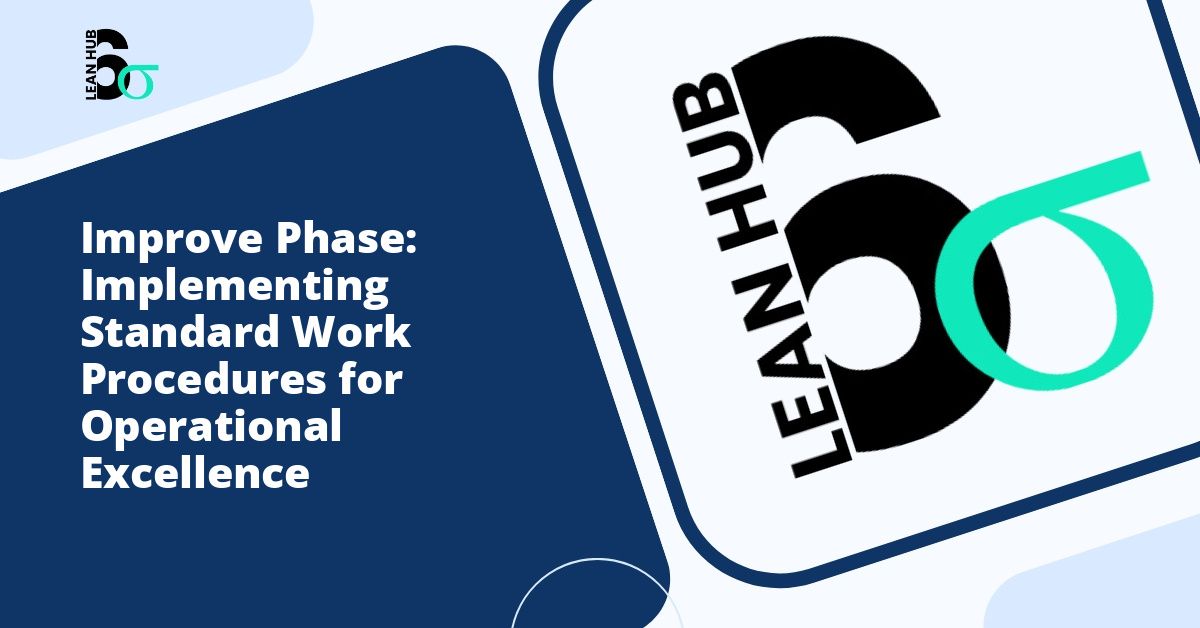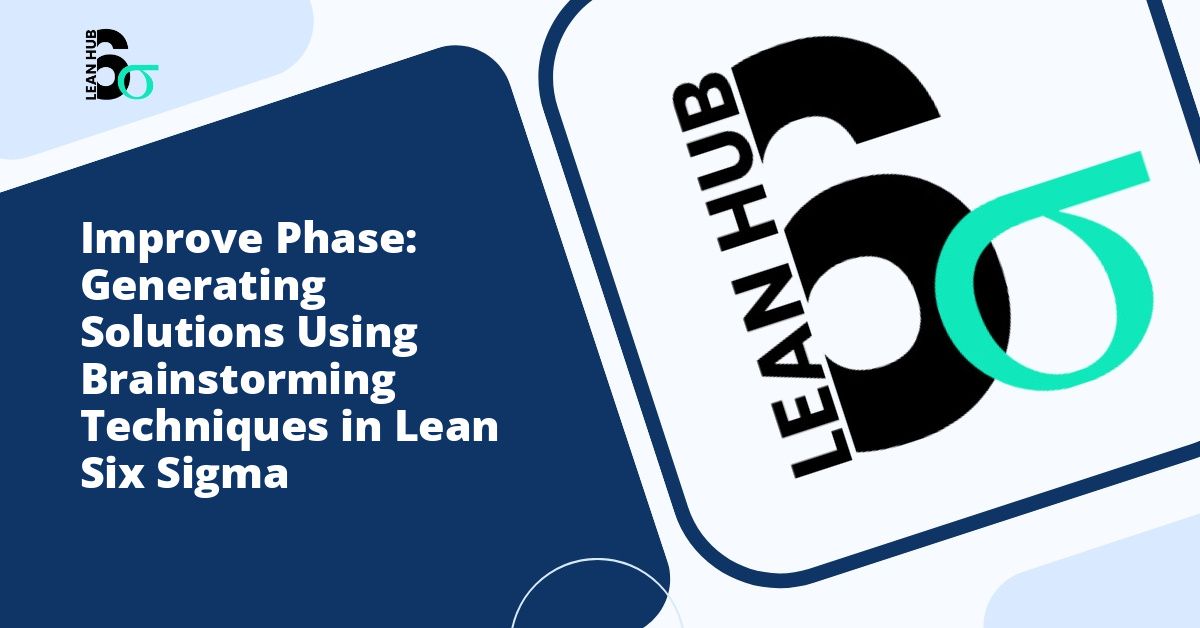The Improve phase stands as a pivotal moment in the Lean Six Sigma methodology, where organizations transform analytical insights into tangible solutions. This critical stage bridges the gap between identifying problems and implementing sustainable change. As we navigate through 2025, understanding how to effectively execute the Improve phase has become essential for businesses seeking operational excellence and competitive advantage.
Understanding the Improve Phase in Lean Six Sigma
The Improve phase represents the fourth stage in the DMAIC (Define, Measure, Analyze, Improve, Control) framework that forms the backbone of Lean Six Sigma methodology. After identifying problems, collecting data, and analyzing root causes, teams arrive at the Improve phase ready to develop and implement solutions that address the core issues affecting process performance.
This phase demands creativity, strategic thinking, and careful planning. Unlike the preceding phases that focus on understanding what is wrong, the Improve phase centers on making things right. Teams must generate innovative solutions, test their effectiveness, and deploy changes that will eliminate defects, reduce variation, and enhance overall process efficiency.
Key Objectives of the Improve Phase
The Improve phase pursues several fundamental objectives that guide project teams toward successful implementation:
- Develop creative solutions that address root causes identified during the Analyze phase
- Design process improvements that eliminate waste and reduce defects
- Test proposed solutions in controlled environments before full-scale implementation
- Create detailed implementation plans with clear timelines and responsibilities
- Ensure solutions align with organizational goals and resource constraints
- Establish metrics to measure improvement success
Essential Tools and Techniques
Successful execution of the Improve phase requires proficiency with various tools and methodologies. Understanding which tools to apply in specific situations separates effective improvement projects from those that struggle to deliver results.
Brainstorming and Idea Generation
The improvement journey begins with creative thinking. Teams employ structured brainstorming sessions to generate diverse solution ideas. Techniques such as mind mapping, nominal group technique, and the Six Thinking Hats method help teams explore multiple perspectives and uncover innovative approaches to problem-solving.
Solution Selection Matrix
Not all ideas deserve equal consideration. Teams utilize solution selection matrices to evaluate potential improvements against criteria such as implementation cost, timeline, expected impact, and technical feasibility. This systematic approach ensures that resources flow toward solutions offering the highest return on investment.
Pilot Testing
Before committing to full-scale implementation, prudent teams conduct pilot tests. These controlled experiments allow organizations to validate solution effectiveness, identify unforeseen challenges, and refine approaches based on real-world feedback. Pilot testing minimizes risk and builds confidence among stakeholders.
Failure Mode and Effects Analysis (FMEA)
FMEA serves as a proactive risk management tool during the Improve phase. Teams systematically examine potential failure modes, assess their severity and likelihood, and develop mitigation strategies. This forward-thinking approach prevents problems before they occur and strengthens solution robustness.
The Recognize Phase Connection
While not traditionally part of the standard DMAIC framework, the recognize phase has gained prominence in modern Lean Six Sigma implementations. This preliminary stage occurs before the formal DMAIC process begins, where organizations identify improvement opportunities and select projects aligned with strategic objectives.
The recognize phase establishes the foundation for successful improvement initiatives. Organizations that excel in this phase demonstrate superior project selection, ensuring that improvement efforts target areas with genuine business impact. This early recognition prevents wasted resources on low-value projects and creates momentum for the improvement work that follows.
Understanding the connection between project recognition and the Improve phase helps teams maintain strategic alignment throughout the improvement journey. Solutions developed during the Improve phase should directly address the opportunities identified during recognition, creating a clear line of sight from initial identification to final implementation.
Implementing Solutions: A Structured Approach
Solution implementation requires careful orchestration of people, processes, and resources. Successful teams follow a structured approach that minimizes disruption while maximizing adoption.
Creating the Implementation Plan
A comprehensive implementation plan serves as the roadmap for change. This document details specific actions, assigns responsibilities, establishes timelines, and identifies required resources. Effective plans also include contingency strategies for potential obstacles and communication protocols to keep stakeholders informed.
Stakeholder Engagement
Change affects people, and people ultimately determine whether improvements succeed or fail. Engaging stakeholders early and often builds support, addresses concerns, and leverages valuable insights from those closest to the process. Communication strategies should emphasize benefits, acknowledge challenges, and demonstrate leadership commitment.
Training and Development
New processes often require new skills. Organizations must invest in training programs that equip team members with the knowledge and capabilities needed to operate improved processes effectively. Training should extend beyond technical skills to include change management principles that help individuals adapt to new ways of working.
Measuring Improvement Success
The Improve phase demands rigorous measurement to validate that solutions deliver expected benefits. Teams establish baseline metrics during earlier phases and compare post-implementation performance against these benchmarks.
Key performance indicators (KPIs) should reflect the specific goals established during the Define phase. Whether reducing cycle time, improving quality, cutting costs, or enhancing customer satisfaction, measurement systems must accurately capture relevant data and present it in formats that facilitate decision-making.
Statistical analysis techniques, including hypothesis testing and control charts, help teams determine whether observed improvements represent genuine change or random variation. This analytical rigor ensures that organizations celebrate real progress rather than statistical noise.
Common Challenges and Solutions
Even well-planned improvement initiatives encounter obstacles. Understanding common challenges helps teams prepare effective responses.
Resistance to Change
Human nature favors familiar routines over uncertain alternatives. Overcoming resistance requires transparent communication, inclusive planning, and demonstrating quick wins that build confidence in the improvement approach.
Resource Constraints
Budget limitations and competing priorities can threaten implementation timelines. Teams must work creatively within constraints, possibly implementing improvements in phases or seeking alternative resources that accomplish objectives within available means.
Scope Creep
Improvement projects sometimes expand beyond original boundaries, consuming additional resources and delaying completion. Maintaining disciplined focus on defined objectives prevents scope creep while allowing flexibility for genuine learning and adaptation.
Best Practices for the Improve Phase in 2025
As Lean Six Sigma methodology continues evolving, several best practices have emerged for maximizing Improve phase effectiveness:
- Leverage digital tools and data analytics platforms that accelerate testing and validation
- Incorporate sustainability considerations into solution design
- Apply agile principles that enable rapid iteration and learning
- Document lessons learned to build organizational knowledge
- Celebrate successes while maintaining honest assessment of challenges
- Ensure solutions consider employee wellbeing alongside operational efficiency
Conclusion
The Improve phase transforms Lean Six Sigma from an analytical exercise into a catalyst for meaningful organizational change. By systematically developing, testing, and implementing solutions that address root causes, teams create lasting improvements in quality, efficiency, and customer satisfaction.
Success in this phase requires technical proficiency with improvement tools, strategic thinking about solution design, and interpersonal skills that navigate the human dimensions of change. Organizations that master the Improve phase position themselves to thrive in increasingly competitive environments where continuous improvement separates market leaders from those struggling to keep pace.
As we progress through 2025, the principles underlying the Improve phase remain constant even as tools and contexts evolve. Whether your organization is embarking on its first Lean Six Sigma project or refining mature improvement capabilities, focusing on disciplined solution development, rigorous testing, and thoughtful implementation will deliver the results that stakeholders expect and customers deserve.








